#longitude festival
Explore tagged Tumblr posts
Photo




Foals at Longitude Festival, Dublin | 19th July 2013.
Photos by Alessio Michelini [x]
#foals#foals band#yannis philippakis#jimmy smith#edwin congreave#festivals#longitude festival#dublin#holy fire
7 notes
·
View notes
Text
reading abt geography again adn i have to redesign my worldbuilding biome map for the 3rd time
#maybe i should have done googling before i put a desert right on the equator. apparently that doesnt happen#<- i feel like i should have been able to figure that out looking at real biome maps but i was only worried abt coastlines#UGH and i was just about to write a bunch of cultural stuff abt seasons and festivals for each of the countries#but now i cant do that until the biomes are correct#which i cant do till after class this evening sicne the file is on my ipad which i dont have at work w me#i could swap the places of two countries to keep the biomes the same in them#but then i have to rewrite the bit abt other countries having cultral influence on this one of them#maybe ill just swap the biomes for them...#but first ive got to check that i didn't make lerava being a desert important for anything else i wrote#and this time im going to put some latitude and longitude lines too. to help out w this biome situation#<- i really really enjoy doing this . if this reads as a complaint it's not it's just thinking#making maps and worldbuilding is like most of my favorite things in one. art bc i can draw them. geography fpr the biomes.#anthropology when i can make up the cultures. etc#talkin
0 notes
Text
Longitude 2023 Day To Day Line-up Announced
.@longitudefest 2023 Day To Day Line-up Announced #Longitude2023
The daily line-up breakdown for Longitude 2023 this summer has been announced alongside a limited number of extra Saturday tickets (going on sale this Wednesday). See line-up below, more acts to be announced. Longitude 2023 will take place at Marlay Park in Dublin from Saturday July 1st to Sunday July 2nd for more information visi Longitude.ie. LONGITUDE 2023 LINE-UP BREAKDOWN Saturday…

View On WordPress
0 notes
Text

17 hechos que tal vez no sepas sobre Portugal:
1. La región del Algarve en Portugal cuenta con algunas de las playas más impresionantes de Europa, atrayendo a millones de turistas cada año. Sin embargo, más allá de sus playas, la región también ofrece pintorescos pueblos pesqueros, acantilados dramáticos y un rico patrimonio cultural.
2. La Universidad de Coimbra, establecida en 1290, es una de las universidades más antiguas en funcionamiento continuo del mundo. Su Biblioteca Joanina, construida en el siglo XVIII, es famosa por su exquisito estilo barroco y alberga miles de libros antiguos.
3. El portugués es el idioma oficial no sólo de Portugal, sino también de Brasil, Mozambique, Angola, Cabo Verde, Guinea-Bissau y Santo Tomé y Príncipe, por lo que es uno de los idiomas más hablados a nivel mundial.
4. Oporto, la segunda ciudad más grande de Portugal, es famosa por su producción de vino de Oporto. El vino se produce exclusivamente en el Valle del Duero y se envejece en bodegas a lo largo del río Duero antes de ser enviado desde Oporto.
5. Portugal es el mayor productor y exportador de corcho del mundo, con gran parte de su corcho cosechado de los robles de corcho que cubren el paisaje del país.
6. El puente Vasco da Gama en Lisboa es uno de los puentes más largos de Europa, que abarca el río Tajo con una longitud de más de 17 kilómetros (unos 11 millas). Lleva el nombre del famoso explorador portugués Vasco da Gama.
7. La Torre de Belém, Patrimonio de la Humanidad de la UNESCO ubicada en Lisboa, fue construida a principios del siglo XVI como una fortaleza para defender el puerto de la ciudad. Es un impresionante ejemplo de arquitectura manuelina, adornada con intrincados tallados y símbolos marítimos.
8. El archipiélago portugués de las Azores, ubicado en el Océano Atlántico Norte, se compone de nueve islas volcánicas. Es un paraíso para los amantes de la naturaleza, ofreciendo paisajes únicos, aguas termales y oportunidades para avistar ballenas.
9. Portugal es el hogar de una de las librerías más antiguas del mundo, Livraria Bertrand, que abrió sus puertas en 1732 en Lisboa. Tiene el récord Guinness mundial de la librería más antigua.
10. A los portugueses les encanta su marisco, y uno de sus platos tradicionales es "Bacalhau à Brás", una sabrosa combinación de bacalao salado, cebollas, patatas y huevos.
11. El país tiene una rica tradición de música de fado, que se caracteriza por sus melodías conmovedoras y melancólicas letras. A menudo se realiza en entornos íntimos conocidos como "casas de fado", particularmente en los barrios históricos de Lisboa.
12. La región del Alentejo en el sur de Portugal es conocida por sus vastos bosques de roble alcornoque, llanuras rodantes y ciudades medievales en la cima de colinas. Es un escape tranquilo del ajetreo y el bullicio de la vida en la ciudad, ofreciendo a los visitantes un vistazo a la cultura tradicional portuguesa.
13. Portugal tiene una larga historia de exploración marítima, con exploradores de renombre como Vasco da Gama, Ferdinand Magallanes y Bartolomeu Dias. Sus viajes jugaron un papel significativo en la forma de la historia mundial durante la era del descubrimiento.
14. La ciudad portuguesa de Óbidos es famosa por sus bien conservadas murallas medievales y sus pintorescas calles. También es conocido por su festival anual del chocolate, donde los visitantes pueden disfrutar de una variedad de golosinas de chocolate.
15. Portugal es uno de los países más soleados de Europa, con más de 3.000 horas de sol al año en promedio. Su clima suave, combinado con sus diversos paisajes, lo convierten en un destino ideal para actividades al aire libre todo el año.
16. Portugal tiene una rica tradición de baldosas de cerámica, conocidas como azulejos, que adornan edificios, iglesias y palacios en todo el país. Estas baldosas intrincadamente diseñadas a menudo representan escenas históricas, motivos religiosos y patrones geométricos.
17. Portugal es el hogar del punto más occidental de Europa, Cabo da Roca, cerca de Lisboa. No es sólo un lugar pintoresco, sino que también tiene significado histórico ya que marca el borde del continente europeo.
5 notes
·
View notes
Text
About Bailu (the solar term)

Bailu (White Dew) is the the 15th solar term on the Chinese solar calendar.
Bailu begins when the sun reaches the celestial longitude of 165° and ends when it hits 180°.
Bailu has three pentads—days within the the solar term that are named after biological and botanical phenomena that occur within that solar term. They are—
The wild geese come (鴻雁來)—referring to geese migration to the south. The dark birds return (玄鳥歸)— The dark birds return, dark birds being swallows. And Birds stock their hoards (群鳥養羞)— basically birds preparing for winter.
Bailu is celebrated in the lead up to Mid-Autumn Festival.
Back in the old days, gathering dew from plants was a prevalent tradition among Chinese people. According to The Compendium of Materia Medica (also know as Bencao Gangmu), a Chinese herbology volume written by Li Shizhen over 400 years ago, white dew can be used as a beverage, which has a cooling effect on the body. Li wrote that it can also heal minor illnesses. (link)
As summer heat recedes, tea trees enjoy more favorable environment around Bailu. Therefore, tea leaves picked during this period of time generate a uniquely rich and fragrant flavor that is preferred by many tea lovers. (link)

On Bailu people longans. It is believed that the fruit brings good luck to people's descendants, as well as calm the nerves and cure insomnia.

There's also water caltrops at this time. Water caltrops signify the hopes for good luck and a bumper harvest.
They also eat Silkies, a chicken who's skin and meat are black. The chicken has to be cooked together with 10 herbs named after bai (white), such as bai mu jin (white Rose mallow) and bai mao xia ku cao (white ajuga). (link)
Families make mijiu— rice wine— during Bailu.
Yu the Great (c. 2123-2025 BC) was a legendary ruler in ancient China who was famed for his introduction of flood control, his establishment of the Xia dynasty which inaugurated dynastic rule in China, as well as his moral character. Every year when it comes to White Dew, fishermen in Jiangsu and Zhejiang provinces will hold a week-long ceremony to worship Yu the Great, hoping he can bring luck and wealth to them. (link)
The animals that are associate and represent Bailu are swallows.
#ooc#bailu!headcanon#I'm laughing over here#dan feng has "the prince of birds on his cloths (cranes) while Bailu (the solar term) has geese XD#celebrating my birthday while writing about bailu's
5 notes
·
View notes
Text
youtube
La historia y mitología de los Juegos Olímpicos se remontan a la antigua Grecia, donde estas competiciones eran mucho más que un simple evento deportivo. Los Juegos Olímpicos antiguos combinaban actividades atléticas con festividades religiosas y culturales, siendo un símbolo de la unidad griega y la devoción a los dioses, especialmente a Zeus.
Origen y Fundación de los Juegos Olímpicos
Mitología
Existen varias leyendas sobre el origen de los Juegos Olímpicos, pero una de las más populares involucra a Heracles (Hércules en la mitología romana), el hijo de Zeus. Según esta versión, Heracles fundó los Juegos Olímpicos en honor a su padre Zeus después de completar uno de sus doce trabajos. Para celebrar su victoria, Heracles creó un estadio y estableció los juegos como una competición regular cada cuatro años.
Otra leyenda menciona a Pélope, un héroe que ganó una carrera de carros y se convirtió en rey de Pisa (una ciudad cercana a Olimpia). En agradecimiento a los dioses, Pélope instauró los juegos en su honor.
Historia
Históricamente, los primeros Juegos Olímpicos se celebraron en 776 a.C. en Olimpia, una ciudad en la región de Élide en el Peloponeso. Estos juegos se llevaban a cabo cada cuatro años y se convirtieron en una tradición fundamental de la cultura griega. El período de cuatro años entre los Juegos se conocía como una Olimpiada, y se utilizaba como una unidad de medida de tiempo en la cronología griega.
Celebración y Competencias
Festival Religioso
Los Juegos Olímpicos eran, en esencia, una festividad religiosa en honor a Zeus, el dios principal del panteón griego. Se celebraban en el santuario de Olimpia, donde se encontraba una de las estatuas más impresionantes de Zeus, realizada por el escultor Fidias. Esta estatua era considerada una de las Siete Maravillas del Mundo Antiguo.
Competencias Deportivas
Los Juegos Olímpicos incluían una variedad de competencias atléticas, algunas de las cuales han perdurado hasta los Juegos Olímpicos modernos. Las principales competiciones incluían:
Carreras a Pie: La más antigua y prestigiosa era la carrera de estadio, que cubría la distancia de un estadio (aproximadamente 192 metros). Otras carreras incluían el diaulos (una carrera de ida y vuelta) y el dolichos (una carrera de larga distancia).
Pentatlón: Una combinación de cinco eventos: salto de longitud, lanzamiento de disco, lanzamiento de jabalina, carrera de estadio y lucha libre.
Lucha Libre y Pankration: La lucha libre era una competencia de fuerza y técnica, mientras que el pankration era una combinación de boxeo y lucha, considerado uno de los eventos más duros.
Carreras de Carros: Estas competiciones se llevaban a cabo en el hipódromo y eran extremadamente populares y peligrosas.
Boxeo: Utilizaban tiras de cuero en las manos en lugar de guantes modernos.
Participación y Reglas
Atletas
Los participantes en los Juegos Olímpicos debían ser hombres griegos libres. Las mujeres no podían competir ni asistir a los juegos, con la excepción de las sacerdotisas. Los atletas entrenaban intensamente y competían desnudos, en parte como una celebración de la forma humana y en parte por razones prácticas.
Tregua Olímpica
Durante los Juegos Olímpicos, se establecía una tregua sagrada conocida como ékécheiria. Esta tregua garantizaba que los competidores y espectadores pudieran viajar con seguridad a Olimpia y regresar a sus hogares sin temor a conflictos armados. La tregua fomentaba la paz y la unidad entre las ciudades-estado griegas.
Declive y Renacimiento
Declive
Los Juegos Olímpicos continuaron siendo una tradición importante durante más de mil años. Sin embargo, con la conquista romana y la eventual adopción del cristianismo como religión oficial del Imperio Romano, los Juegos Olímpicos fueron prohibidos en el 393 d.C. por el emperador Teodosio I, quien los consideró un rito pagano incompatible con el cristianismo.
Renacimiento Moderno
Los Juegos Olímpicos fueron revividos en la era moderna gracias a los esfuerzos de Pierre de Coubertin, un educador y historiador francés. Inspirado por los antiguos juegos, Coubertin fundó el Comité Olímpico Internacional (COI) y organizó los primeros Juegos Olímpicos modernos en Atenas en 1896. Estos juegos se han celebrado cada cuatro años desde entonces, convirtiéndose en un evento global que celebra la unidad, la paz y la excelencia deportiva.
Simbolismo y Legado
Llama Olímpica
Uno de los símbolos más reconocidos de los Juegos Olímpicos modernos es la llama olímpica, que se enciende en Olimpia y se transporta hasta la ciudad anfitriona a través de un relevo de antorchas. Este ritual simboliza la conexión entre los Juegos Olímpicos antiguos y modernos.
Anillos Olímpicos
Los anillos olímpicos, diseñados por Pierre de Coubertin, representan la unión de los cinco continentes y el espíritu de amistad y competencia global. Los colores de los anillos (azul, negro, rojo, amarillo y verde) junto con el fondo blanco de la bandera olímpica, fueron seleccionados porque cada nación del mundo tiene al menos uno de estos colores en su bandera nacional.
4 notes
·
View notes
Text
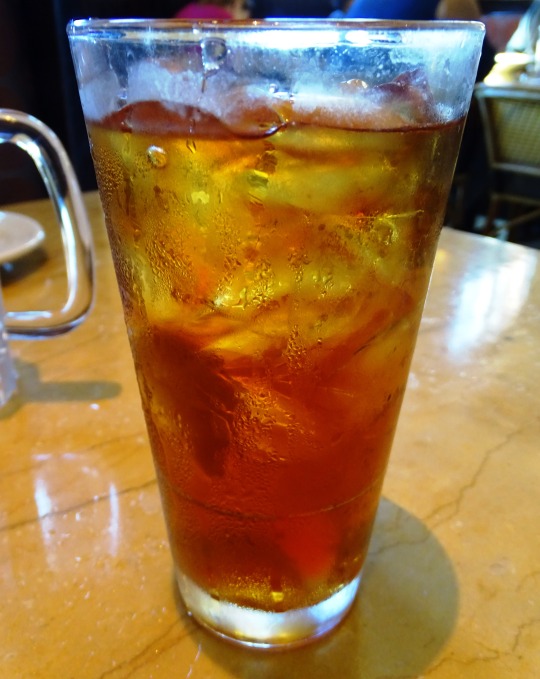



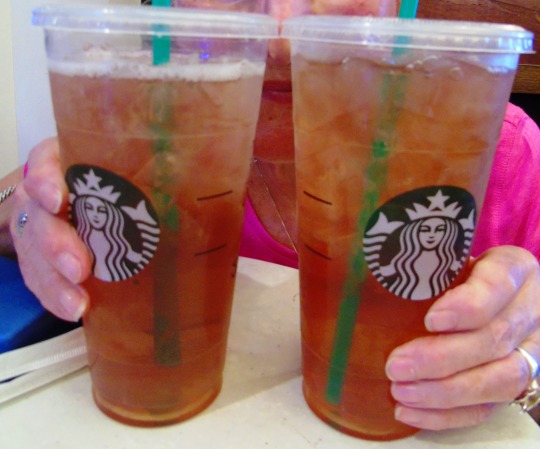
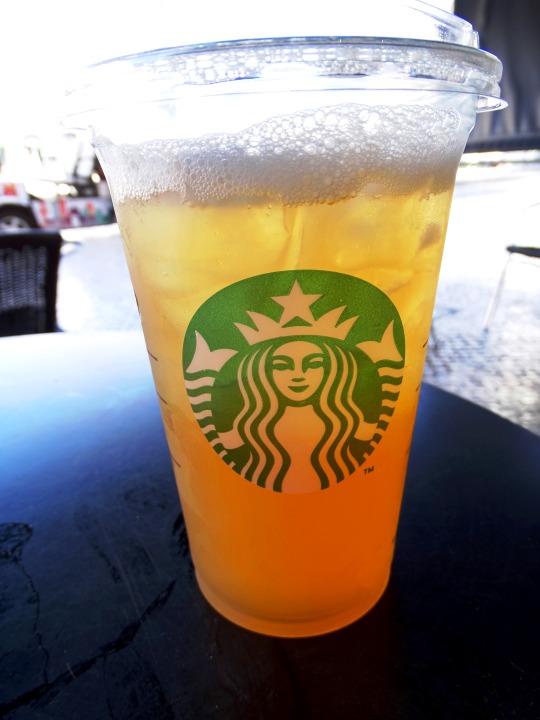





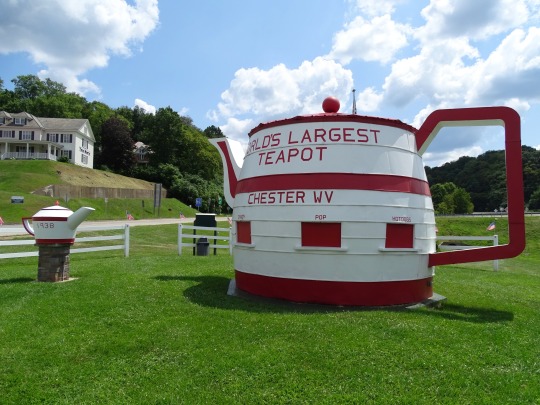






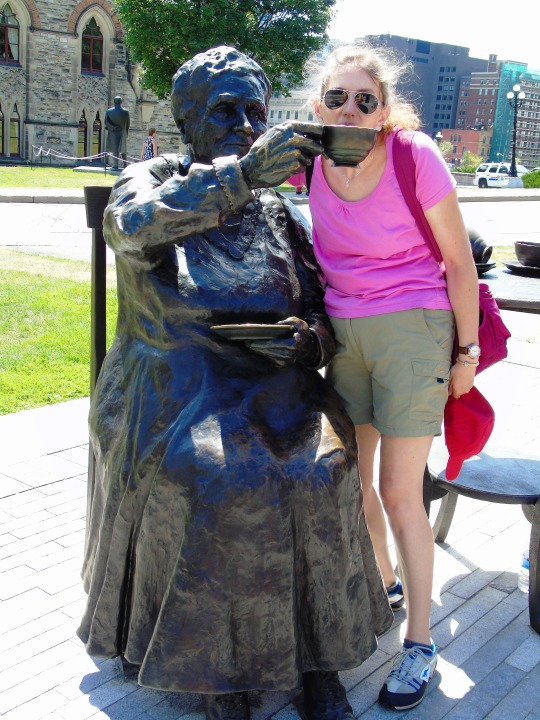

National Tea Day
Just because we dumped all that tea in the harbor, doesn’t mean we don’t enjoy the relaxing, warm drink. Visit a Fest-Tea-Val, or simply enjoy a steaming mug of tea.
That’s about the perfect sentiment we can think of for a nice cup of tea! Tea is a wonderful drink that comes in a wide variety of different flavors, each of them having a distinct personality and character. It has been used for everything from a simple morning libation to the central element of certain social and religious rituals.
This amazing drink is so important that taxing it was the final straw that ignited a fledgling country to declare a revolution! National Tea Day celebrates this fantastic beverage and the seemingly endless list of things it can do.
History of National Tea Day
The History of National Tea Day reaches far back into the world’s history but can be narrowed down to a place of origin that is surprisingly precise.
This place sits at the intersection of Latitude 29N and Longitude 98E, notable as the joining of NE India, Burma, China, and Tibet. Many mythological origins for tea also exist as well, some of them merely interesting and others quite gruesome.
In one period in China, the Emperor had ordered that all people of his nation would boil their water before drinking it. So it came to pass that the Emperor was sitting and drinking a simple cup of boiled water when leaves from a nearby tree blew into it, creating the first tea.
In another tale, a man sat meditating in front of a wall (for 9 whole years!) when he accidentally fell asleep. On waking, he was so disgusted with his inability to stay awake, which he considered to be a weakness, that he severed his eyelids and threw them to the ground where they sprouted into the first tea bushes. A little disturbing, perhaps, but utterly Asian in its style.
Regardless of its origins (which may be in dispute) the importance of tea cannot be understated. And anyone is strongly encouraged to research it since it would be impossible to cover it’s entire history here.
Now, it’s time to take a look at what tea is–and what it is not. Officially speaking tea is an infusion of the leaves of Camellia Sinensis, an unassuming evergreen plant that hails from Asia. Technically, what tea is not is anything that does not contain these leaves.
That means that, while infusions of herbs not containing these leaves may be referred to as ‘Herbal Teas’, they are not in fact teas at all. Only those infusions which contain the Camellia Sinensis leaves can properly be called tea. Considering tea is the second most consumed beverage in the world, second only to water, it seems that a little accuracy is in order.
On the other hand, as words and traditions evolve, many things have become known as tea, which so many people around the world enjoy, that it doesn’t hurt to be a little generous with the definition. And generosity is what National Tea Day is all about. Drinking, and sharing, a generous cup of tea.
Because it spans a variety of sources and cultures, a couple of different dates have been recognized as National Tea Day. April 21 is National Tea Day in the UK. The UN has put National Tea Day a month later, and another National Tea Day falls in the middle of December. There are even days for Iced Tea, Bubble Tea and Chai. Not to mention a whole month for Earl Grey Tea and Iced Tea.
It seems that celebrating Tea is a festivity that should be happening all throughout the year! And since tea is the most consumed drink in the world (after water) no one is even going to complain.
How to Celebrate National Tea Day
Drink a Cup (or Glass or Mug) of Tea
Literally hundreds of varieties of tea are in existence, from those that are gently dried and cured to those that go through complex processes that can include long stays in caves. So many varieties of tea exist that it almost defies the imagination! National Tea Day is the perfect time to try a few new ones.
Grab a Glass of Iced Tea
In some countries, tea is only considered to be authentic if it is enjoyed hot. However, other cultures have taken the idea of tea and turned it into a cold beverage. For instance, in the United States, iced tea is a common beverage that is served in a large, tall glass. It is often sold by the gallon in stores and, in the south (but almost never in the north!), it is made very sweet.
Whatever the case, the first order of business for National Tea Day is sitting down to enjoy a sip in whatever form is preferred.
Attend the Fest-Tea-Val in UK
Celebrated all throughout the United Kingdom, Fest-Tea-Val (festival!) Tea rooms, hotels, cafes and pubs all around the nation host special events, promotions and activities that are centered around the country’s favorite drink: tea. These events are often paired with worthy charities in order to provide financial support for them.
Host a Fest-Tea-Val
Those outside of the UK certainly don’t need to be excluded from all of the fun! Consider hosting a National Tea Day celebration at home, at work, or in the community. Simply gather friends or coworkers together and put on a spread of different varieties of tea that can be tried. This would also be a great time to call that friend who has the eclectic collection of teapots!
Take the Sustainable Tea Challenge
Since most tea bags are made of plastic, which isn’t great for the earth, many people are moving in the direction of using loose leaf tea or at least compostable tea bags. Some companies try to promote sustainability and eco-friendliness in the production of their tea, including:
Numi. Fair-trade, organic, and offsetting carbon emissions.
Yogi. Organic, recyclable/compostable packaging and gives back.
Pukka. Organic and donates profits to help the planet.
Source
#Earl Grey#Earl Grey Tea is my favorite tea#tea Earl Grey hot#lavender tea#Peach Green Tea#Peach Citrus Green Tea#Pineapple Black Tea#travel#always unsweetened#Tropical Ice Tea#tea mug#tea pot#drinking#USA#National Tea Day#NationalTeaDay#restaurant#lounge#vacation#original photography#Purple Haze Lavender Farm#21 April#Capilé#Portugal#Canada#Women are Persons By Barbara Patterson#Ottawa#World's Largest Teapot#Chester
3 notes
·
View notes
Photo



Foals at Longitude Festival, Dublin | 19th July 2013.
Photos by Alessio Michelini [x]
6 notes
·
View notes
Text
I am still alive, I promise. I'm slowly working on things. Slowly.
I had FORTY homework assignments last week. online summer classes are a bitch and a half.
But, I'm trying to be more caught up and for those that followed me when I did this 4 summers ago, I'm going to be in Europe, essentially for 4-6 weeks. It's taken four freaking years to get back to my second home, well I tend to be all over when I'm there, but primarily Ireland and Spain, with a couple weeks in Mexico. I get to go back to the Galway Film Fleadh, which is one of my favorite film festivals. Plus, Longitude Music Festival is one of my favorites and I love Barcelona. But yeah, these are my favorite kind of working summers, that are basically no work, except for certain days. Mentally, I need to get out of this town.
But, I should still be around, and my sleep pattern will still suck.
8 notes
·
View notes
Text
Capricorn (astrology)
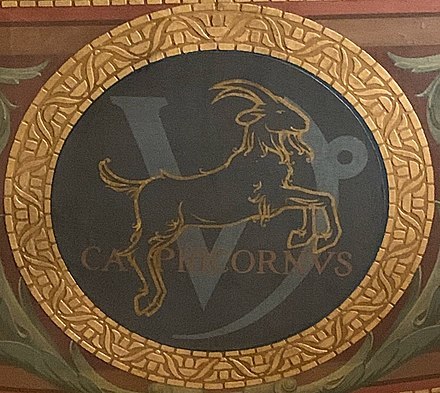
Capricorn (♑︎) (Greek: Αιγόκερως, romanized: Aigókerōs, Latin for "horned goat") is the tenth astrological sign in the zodiac out of twelve total zodiac signs, originating from the constellation of Capricornus, the goat.[2] It spans the 270–300th degree of the zodiac, corresponding to celestial longitude. Under the tropical zodiac, the sun transits this area from around December 22 to January 19.[2] In astrology, Capricorn is considered an earth sign along with Virgo and Taurus, a negative sign,[3][4] and one of the four cardinal signs. Capricorn is said to be ruled by the planet Saturn alongside Aquarius.

There appears to be a connection between traditional characterizations of Capricorn as a sea goat and the Sumerian god of wisdom and waters,[5] who also had the head and upper body of a goat and the lower body and tail of a fish.[6] Later known as Ea in Akkadian and Babylonian mythology, Enki was the god of intelligence (gestú, literally "ear"), creation, crafts; magic; water, seawater and lake water (a, aba, ab).[7]

Cultural significance
In India, the zodiac sign of Capricorn is celebrated as the Makara Sankranti festival,[8] also known in Nepal as Maghe Sankranti.[9] The Indian astronomical calendar is not based on the western Gregorian or Julian date keeping system. The Gregorian calendar has fixed days in a year and does not accommodate difference in the actual solar year. Therefore, the festival is celebrated on either of January 14 or 15 every year, when, as per the Indian astronomical calendar, the Sun actually enters the Capricorn sign.

(source)
4 notes
·
View notes
Link
The weekend is upon us and there is only one place to be Believe Detroit Lions Team 2024 T-Shirt . Longitude at Marley Park. The festival
0 notes
Text
GURU SHOP Vestido convertible Goa Psytrance Festival Dress Pixi Rock Mujer Verde Algodón Talla: 36
Precio: (as of – Detalles) Valoración media de los compradores: 4/5 Estrellas Elegante vestido en zigzag con tirantes para atar. Opcionalmente, se puede doblar la cintura y tiene una gran falda con aspecto de elfo. El material ligeramente elástico se adapta perfectamente a la figura. – Longitud de las mangas sin mangas. – Características especiales ropa alternativa – Color negro. – Color…

View On WordPress
0 notes
Text
Offline Marketing Dublin | Quicklinks Ltd
Offline marketing in Dublin, like in many other cities, revolves around promoting businesses and services through traditional, non-digital channels. Here are some common strategies for offline marketing that are particularly relevant for businesses in Dublin:
1. Print Advertising
Local Newspapers and Magazines: Dublin has a range of local publications where businesses can advertise. Some examples include The Dublin Gazette, Irish Times, and Hot Press (for music and entertainment-related businesses).
Flyers and Posters: Distributing flyers in strategic areas like universities (Trinity College, University College Dublin), shopping districts (Grafton Street, Henry Street), and events can help gain local attention.
2. Billboards and Outdoor Advertising
Billboards and Banners: Large outdoor spaces in high-traffic areas (e.g., Dublin City Centre, Temple Bar) offer great exposure. JCDecaux and Clear Channel are two major outdoor advertising companies in Dublin.
Bus and Tram Ads: Dublin's public transportation, including Dublin Bus and the Luas (tram system), offer ad space on vehicles or at stops, targeting commuters.
3. Sponsorships and Events
Local Events Sponsorship: Sponsoring local events like music festivals (Electric Picnic, Longitude), sports (Dublin GAA games, rugby), or cultural events (St. Patrick’s Day, Dublin Theatre Festival) can create brand visibility.
Community Engagement: Participating in or organizing community events can boost brand recognition and foster goodwill.
4. Networking and Word of Mouth
Networking Events: Dublin has a vibrant business community with events like Dublin Chamber meetings, start-up meetups, and conferences that are great for word-of-mouth marketing.
Referral Programs: Encouraging existing customers to recommend your business in exchange for discounts or rewards can be very effective.
5. Direct Mail
Postcards, Catalogs, and Brochures: Sending physical mail to potential customers in certain postal areas (targeting demographics or locations) is another form of offline marketing. Dublin has several services for direct mail distribution.
6. Promotional Merchandise
Branded Giveaways: Distributing branded merchandise such as pens, tote bags, or keychains at public events, trade fairs, or through local stores can increase brand awareness.
These strategies can help businesses in Dublin increase visibility and customer engagement through traditional marketing channels.
0 notes
Text
Unveil the Mystical Charm of Ujjain with the Best Mahakaleshwar Tour Package
India is a land rich with spiritual heritage, and among the many revered pilgrimage sites, Ujjain stands out as a beacon of divine energy and ancient history. Situated on the banks of the Kshipra River, Ujjain is home to the renowned Mahakaleshwar Temple, one of the twelve Jyotirlingas dedicated to Lord Shiva. Every year, millions of devotees and travelers flock to this sacred city to seek blessings, experience the vibrant culture, and immerse themselves in its mystical charm.
For those looking to explore this spiritual haven with ease and comfort, the Ujjain Mahakaleshwar Tour Package offers an incredible opportunity to experience the city’s divinity without the hassle of planning. Let’s dive into how this well-curated tour package by Tourtripx can help you discover the wonders of Ujjain and the majestic Mahakaleshwar Temple.
Why Visit Ujjain?
Ujjain is not just a religious destination; it is a place where history, mythology, and spirituality converge. The city holds immense significance in Hindu tradition and is mentioned in various ancient texts. Some key reasons why Ujjain remains a top spiritual destination include:
1. Mahakaleshwar Temple: The Heart of Ujjain
The Mahakaleshwar Temple is the crown jewel of Ujjain. Dedicated to Lord Shiva, this Jyotirlinga is known for its unique Bhasma Aarti, a daily ritual that starts before dawn, where the idol is worshipped with ash from cremation grounds. The experience is profoundly spiritual, drawing in pilgrims who seek to connect with the divine essence of the universe. The Ujjain Mahakaleshwar Tour Package ensures that you won’t miss this iconic ritual, offering you a front-row experience of this extraordinary spiritual event.
2. The Mystical Connection to Time
Ujjain is also considered the Greenwich of India—the city is where the ancient prime meridian passed through, marking the zero longitude in Hindu cosmology. It is believed to be one of the few places in the world where time and space connect on a metaphysical level. This adds to the mystical charm of Ujjain, making it a must-visit for those fascinated by the mysteries of the universe.
3. The Holy River Kshipra
The sacred Kshipra River is another significant attraction. Ujjain hosts the Kumbh Mela, a grand festival that occurs every 12 years, drawing millions of devotees who bathe in the river to cleanse themselves of sins. While the Kumbh Mela is a rare event, the daily rituals by the river are a sight to behold. The Ujjain Mahakaleshwar Tour Package includes visits to these sacred ghats, allowing you to experience the serene and spiritual atmosphere of the river.
What to Expect in the Ujjain Mahakaleshwar Tour Package
Offered by Tourtripx, this well-planned 3 Nights / 4 Days Ujjain Mahakaleshwar Tour Package is tailored to provide a seamless and enriching journey. Here’s a look at what this package has to offer:
Day 1: Arrival and Exploring Ujjain
Upon your arrival in Ujjain, you will be greeted by the warm and welcoming atmosphere of the city. After checking into your hotel, the first day will be spent exploring Ujjain’s vibrant streets and markets. Visit temples like the Kal Bhairav Temple, where offerings of alcohol to the deity are a unique tradition, and the Harsiddhi Temple, an important Shaktipeeth.
Day 2: Mahakaleshwar Temple and Nearby Attractions
The second day of your tour will be dedicated to visiting the Mahakaleshwar Temple. The package includes a guided tour, ensuring you don’t miss the iconic Bhasma Aarti and other important rituals. After your spiritual sojourn at the temple, visit nearby attractions like the Chintaman Ganesh Temple, known for its self-manifested idol, and Ram Ghat, where evening aartis create an enchanting atmosphere.
Day 3: Ujjain’s Historical and Religious Sites
On the third day, the Ujjain Mahakaleshwar Tour Package includes visits to the city’s other important religious and historical landmarks. Explore the Vikram Kirti Mandir, a museum dedicated to King Vikramaditya, and the Bade Ganeshji Ka Mandir, which houses one of the largest idols of Lord Ganesha in the country. You’ll also get to visit Jantar Mantar, an ancient astronomical observatory that speaks to the city’s deep connection with time and space.
Day 4: Departure
After three days of spiritual rejuvenation and cultural immersion, your tour will conclude, and you will be safely escorted to the railway station or airport for your journey home, carrying with you memories of a profound spiritual experience.
To learn more about the tour or to book, you can visit Ujjain Mahakaleshwar Tour Package.
Why Choose the Ujjain Mahakaleshwar Tour Package by Tourtripx?
There are several reasons why Tourtripx is the ideal choice for this spiritual journey:
1. Hassle-Free Planning
With Tourtripx, you don’t have to worry about the logistics. From accommodation to guided temple visits, everything is taken care of, allowing you to focus on your spiritual journey.
2. Local Expertise
Tourtripx offers local guides who are knowledgeable about Ujjain’s history, mythology, and religious significance. This enhances your experience, providing context and deeper understanding during your temple visits.
3. Comfortable Accommodation and Transport
The Ujjain Mahakaleshwar Tour Package includes comfortable accommodations that ensure you have a restful stay. The package also includes reliable transportation for sightseeing, so you can enjoy your trip without any stress.
4. Customizable Packages
Tourtripx offers customizable packages, allowing you to tailor the itinerary according to your needs. Whether you want to extend your stay, add more temple visits, or explore nearby cities like Omkareshwar or Indore, the team at Tourtripx can accommodate your preferences.
For more details or to explore other tour packages, visit the official website at Tourtripx.
Final Thoughts: A Journey Beyond the Physical
Visiting Ujjain is not just a trip; it’s a spiritual pilgrimage that connects you to something greater than yourself. The Mahakaleshwar Temple is a place where devotees experience the divine energy of Lord Shiva, and the city itself offers a gateway to India’s rich religious traditions. By choosing the Ujjain Mahakaleshwar Tour Package by Tourtripx, you’re ensuring that your journey is both comfortable and deeply fulfilling. Whether you’re seeking spiritual growth or simply want to explore one of India’s oldest cities, this package offers a comprehensive experience that you will treasure forever.
Embark on your journey today, and let the sacred city of Ujjain reveal its mystical charm to you.
0 notes
Text
ONE PIECE 1124 Spoilers!
This week's toasts:
Egads!! A ne'er-do-well lurks yonder! Save us, tall and beautiful man!
DJ Albatross lighting up Longitude Festival uns uns uns uns
Tell that overgrown drumstick what for Vivi!!
I love these reminders that Morgans is legit dangerous. Like he could turn the whole world against Luffy & co by the time they reach Elbaf unless Vivi can put a spanner in the printing press.
Also I love Wapol handwringing in the bg, he's such a good comic side character lmao
"If the world is going to be destroyed, I don't expect to live though it anyway" HARD. FUCKING. LINE. Very D.
This is probably the greatest week of Morgans' life. At least since the end of the Paramount War, or maybe Roger's execution. Man's gonna be laying eggs when BB makes good on Catarina's Saturn copy.
Safe travels Sentomaru, you did jack and shit, and Jack left ahead of ya.
More seriously, given the next few pages, I wonder will Sentomaru be pivotal in a certain Admiral doing a face turn...
"Have you ever killed a close friend?" Akainu has a reason/s for being the way he is. And while I hate him as a fictional person, I also keenly want to know what that reason/s might be. Might this be foreshadowing...?
Oh fuck what if this is foreshadowing Akainu vs Kizaru down the line????
Seeing Stella's near-lifeless body like that, limp on Kizaru's light sword, is still quite upsetting.
"If you have time to sit there and doubt me... then come over here and see my work for yourself, you ungrateful brat!!!" fucking. felt. any lingering doubt as to how Kiz feels about this, begone. Fuck... He's an antagonist, but I'm really feeling for him right here.
"I'm sorry brother..." I'm fucking feeling this too, what a rare and sincere moment of non-bloodlust from Akainu.
Vegapunk asking for an escape from Egghead doesn't quite gel with the reveals from last week, but it's not hard to chalk this up to him keeping up the pretence to fool York, or else to get the Strawhats off Egghead with or without him.
Jimbei being part of the crew nbd, we love to see it. Two burly uncles assessing the adventure.
"moping over one geezer dying" stfu mosshead no one asked you. worst Strawhat back on his bullshit. I hope Sanji spat in that beer
omg they sit on giant chair
let Lilith briefly grieve her outer headmates Usopp, read the room pls
I'll be honest lads, I read this 'Satellites aren't dead' bit and just fucking laughed. Fuck sake Oda. If this wasn't wholly plausible given the whole Satellite hivemind situation, I would be seriously miffed! Alas, this was speculated heavily by many, and it endures scrutiny. Lilith probably means their personalities were uploaded to Punk Records as digital avatars, or something along those lines? Fuck it maybe we can get an Ace force ghost this way, why not.
Wait maybe Zoro's earlier line was pre-lampshading this turn? My bad Mosshead.
I just love Luffy's about-face. The gods bear fickle moods and Nika is no exception lmao
Aaaaaaaaaaaand finally here's the arc wrap feast. Aaaaah. Satisfying. Robin looking beautiful but of course. She'll reunite with Saul soon!!!!!!!!!
"I don't care if you guys end up as my enemies" I hope I'm reaching with this one but... can anyone tell me what foreshadowing is
Like what a strange and ominous remark. I know Luffy's whole MO is being benignly selfish but are we about to get some serious interrogation of that trait of his? No. No we're not. But it's an intriguing notion heheh.
Okay so this is almost certainly Shanks, right. I'm going from the shape, the glug of what's certainly an alcoholic bevvie, and the air of impatience about them. Shanks has been waiting, what, about a quarter of a century for this? You can't blame him for looking at the clock for clock-out time. Babysitting the dawn of the world is tiring work I imagine.
No word yet on the next chapter on the Viz site, so next week may likely be a break. 2 weeks will be a sore wait, but next time we'll either likely meet this waiting figure, or get some world developments en route to Elbaf!
Cya in September nakama! 💪✖️
#op spoilers#live from ohara#I love Usopp being positioned so prominently on the feast pages... brave warrior time is approaching
1 note
·
View note
Text
Liqiu
Today is the Beginning of Autumn, the 13th solar term of the traditional "24 solar terms" in China, and the first solar term of autumn. Dou refers to the southwest, the sun reaches the longitude of 135°, in the Gregorian calendar every year on August 7 or 8 festival. The change of the whole nature is a gradual process, beginning of autumn is Yang gradually harvest, Yin gradually grow, from Yang sheng gradually changed to Yin sheng turning point. In nature, things begin to grow from luxuriant to dull and mature.
Wish you enjoy the beautiful scenery in the autumn, enjoy countless leisure and cozy: wish you harvest fruits in the autumn, pick countless happiness and happiness. Happy Start of Autumn!
whatsapp + 86 183 9274 3987

0 notes